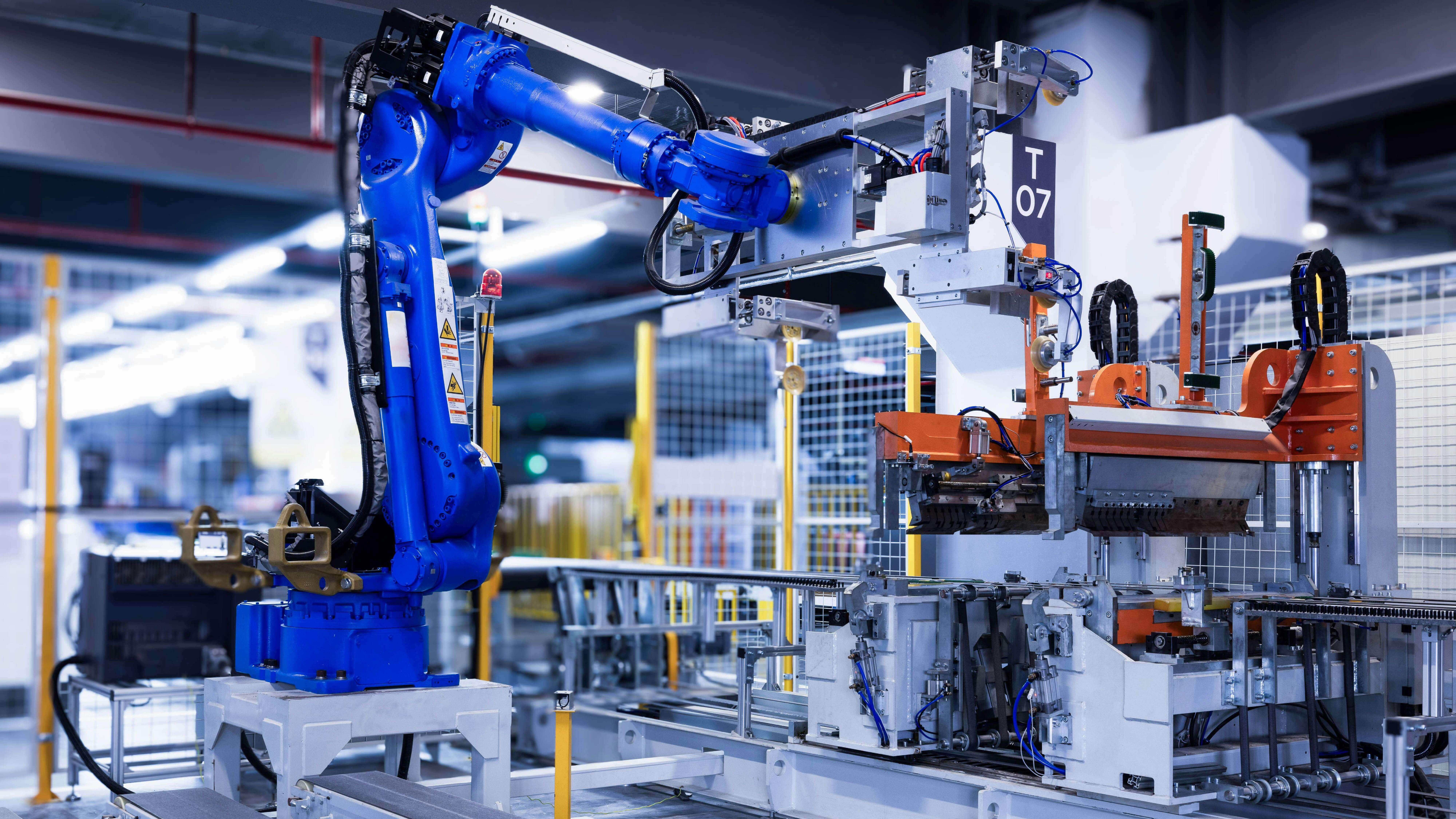Market Trends: Enterprise AI Adoption Strategies
16 Jan, 2025
Join Vantage to access this research
Access our entire Digital Transformation Leaders research portfolio by joining Vantage
Need help or have a question about this report? Contact us for assistance
Executive Summary
This report explores how enterprise AI adoption strategies are reshaping businesses by harnessing cutting-edge technologies and services to streamline operations and drive innovation. It offers an overview of the current market landscape and future directions, based on an in-depth analysis of key drivers and opportunities for technology vendors, service providers and enterprise customers. The analysis introduces five levels of AI sophistication – from AI with human oversight to fully autonomous organizational AI agents. By highlighting emerging trends, the report provides actionable insights for organizations to strategically plan their AI initiatives, deploy AI at scale, foster innovation and achieve sustainable growth.
Summary for decision-makers
GenAI breakthrough elevates AI to the C-Level agenda
R&D advances trigger a new wave of AI enterprise adoption
Firms ramped up spend on AI projects from 2023
Huge investments by the tech community will power AI developments for years
Tech providers should map their solutions to five levels of AI maturity
Level 1: AI in the human-dominant loop
Level 2: Balanced human intelligence/AI loop
Level 3: Human intelligence in the AI-dominant loop
Level 4: Domain-specific autonomous AI agents
Level 5: Organizational AI agents interacting across domains
AI trends will reshape enterprise digital strategies
AI infrastructure developments will enhance the value proposition
Expanding GenAI toolkits will overcome barriers to deployment and utilization
Proven benefits from early RAG models will trigger increased spending
Organizations will leverage the power of existing AI implementations with GenAI interfaces
Big wins from AI integration into enterprise apps will reassure CIOs
Business-process-specific AI agents will deliver transformative value
GenAI breakthrough elevates AI to the C-Level agenda
R&D advances trigger a new wave of AI enterprise adoption
Firms ramped up spend on AI projects from 2023
Huge investments by the tech community will power AI developments for years
Tech providers should map their solutions to five levels of AI maturity
Level 1: AI in the human-dominant loop
Level 2: Balanced human intelligence/AI loop
Level 3: Human intelligence in the AI-dominant loop
Level 4: Domain-specific autonomous AI agents
Level 5: Organizational AI agents interacting across domains
AI trends will reshape enterprise digital strategies
AI infrastructure developments will enhance the value proposition
Expanding GenAI toolkits will overcome barriers to deployment and utilization
Proven benefits from early RAG models will trigger increased spending
Organizations will leverage the power of existing AI implementations with GenAI interfaces
Big wins from AI integration into enterprise apps will reassure CIOs
Business-process-specific AI agents will deliver transformative value
Figure 1. Milestones in AI evolution 2015-2024
Figure 2. Key focus areas for AI projects across organizations in 2025
Figure 3. Key AI funding rounds of 2024
Figure 4. The 5 levels of AI sophistication
Figure 5. Level 1: AI in the human-dominant loop
Figure 6. Level 2: Balanced human intelligence/AI loop
Figure 7. Level 3: Human intelligence in the AI-dominant loop
Figure 8. Level 4: Domain-specific autonomous AI agents
Figure 9. Level 5: Organizational AI agents interacting across domains
Figure 10. Benchmark of leading LLMs
Figure 11. Key factors accelerating AI investments in organizations
Figure 2. Key focus areas for AI projects across organizations in 2025
Figure 3. Key AI funding rounds of 2024
Figure 4. The 5 levels of AI sophistication
Figure 5. Level 1: AI in the human-dominant loop
Figure 6. Level 2: Balanced human intelligence/AI loop
Figure 7. Level 3: Human intelligence in the AI-dominant loop
Figure 8. Level 4: Domain-specific autonomous AI agents
Figure 9. Level 5: Organizational AI agents interacting across domains
Figure 10. Benchmark of leading LLMs
Figure 11. Key factors accelerating AI investments in organizations
ABB, Absci, Accel, Accenture, ADNOC, Advanced Micro Devices (AMD), AiDash, Akira AI, Algolia, Alphabet, Amazon, Amazon Web Services (AWS), Andreessen Horowitz, Anthropic, Apple, ARCH Venture Partners, ARM, Artisan, AspenTech, AstraZeneca, Augury, Automation Anywhere, AVEVA, Ayonix, BACA Systems, Bain Capital Ventures, Bank Mandiri, Bank of America, Benchmark Gensuite, BlackRock, Bosch, Brookfield Renewable Partners, C3 AI, Capgemini, Celanese, Chetu, Citigroup, Clove, Coatue, Cohere, Constellation Energy, CoreWeave, CytoReason, Dartmouth College, DeepMind Technologies, Dow, DST Global, Duke Energy, Electric Reliability Council of Texas (ERCOT), Estée Lauder, European Commission, Exscientia, Facebook, Fennemore Craig, FICO, Figure, Fluor, Foresite Capital, G42, GE Vernova, General Catalyst, GitHub, Goldman Sachs, Google, Groq, H2O.ai, Holcim, Hortifrut, Hugging Face, IBM, IFS, Inflection AI, JD Sports, juna.ai, Kairos Power, Klarna, Kleiner Perkins, KPMG, Kuva Systems, Lucent Law, Maersk, Marathon Oil, Marks & Spencer, Massachusetts Institute of Technology (MIT), Meta, Micron, Microsoft, Mistral AI, Morgan Stanley, Netomi, Norrsken VC, NVIDIA, OpenAI, Palantir, Persefoni, Pfizer, poolside, Predictive Layer, Protex AI, PwC, Qualcomm, Rankai, Recursion Pharmaceuticals, Replit, Safe Intelligence, Sainsbury’s, Salesforce, Saudi Aramco, Scale AI, Sequoia Capital, ServiceNow, Shell, Shopify, Siemens, Simmons & Simmons, SLB, SoftBank, SparkCognition, Swiss Re, SymphonyAI, Tabnine, Taiwan Semiconductor Manufacturing Company (TSMC), The New York Times, Thrive Capital, Tiger Global, TotalEnergies, Uber, UiPath, Unstructured, US Air Force, US National Institutes of Health (NIH), Vercel, Wa’ed Ventures, Waymo, Waze, Xaira Therapeutics, Y Combinator, Yuma AI, Zoom
About the Authors

David Metcalfe
CEO and Co-Founder
David is the CEO and co-founder of Verdantix, where he leads the firm’s strategic direction and client engagement. Since co-founding the firm in 2008, David has built a ...
View Profile
Henry Kirkman
Industry Analyst
Henry is an Industry Analyst at Verdantix. His current research agenda focuses on quality management, field service management and industrial applications of AI, including Gen...
View Profile











